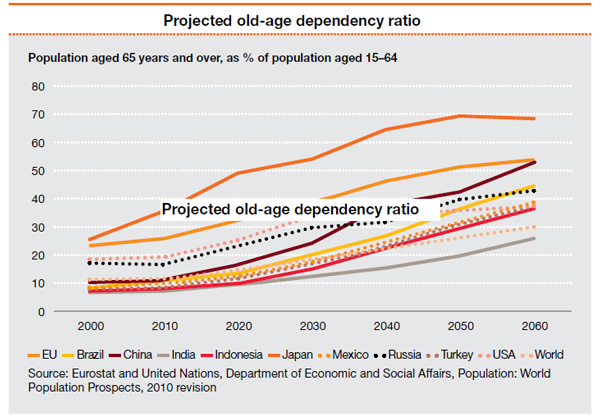India might be embroiled in coffer-emptying controversies and scams and putting up a less-than-stellar economic performance when compared to China. And we might be lagging regions like the EU on several socio-economic indicators. But there is one demographic trend where we’re outperforming these regions by a mile.
According to a PricewaterhouseCoopers report titled ‘Real Estate 2020: Building the future’, India is slated to be amongst the youngest countries in the world in the next few decades, with the senior-citizen age dependency ratio predicted to be just over 20 percent of the population in the 15-64 demographic.
By contrast, Japan, the EU and China are going to the oldest countries in the world by 2060. For each of these regions, the population above 65 years of age, as a percent of the population aged 15-64 years is 70 percent for Japan and a little over 50 percent for the EU and China.
What this index measures is the pressure on the productive population, by weighing thosetypically not in the labor force (the dependent part) with those typically in the labor force (the productive part).
The implication of this trend: whatever be the situation today, India has the potential to boost its economic growth in the long run because of a greater proportion of young people who can enter the workforce and increase economic output. With India facing a lower old-age dependency ratio, the chance of racing ahead of the Chinese, Japanese and European economies is very real.
Countries with higher old-age dependency ratios (such as China), in contrast, face slowing economic growth rates.
All that remains for India is to realise its potential.
Of course, there is a silver lining for the ageing regions - a real estate gold mine.
The report states that while office, industrial, retailand residential will remain the mainsectors, retirement will become asignificant sub-sector in their own right, with a rising demand for more nursing homes and retirement accommodation.
)